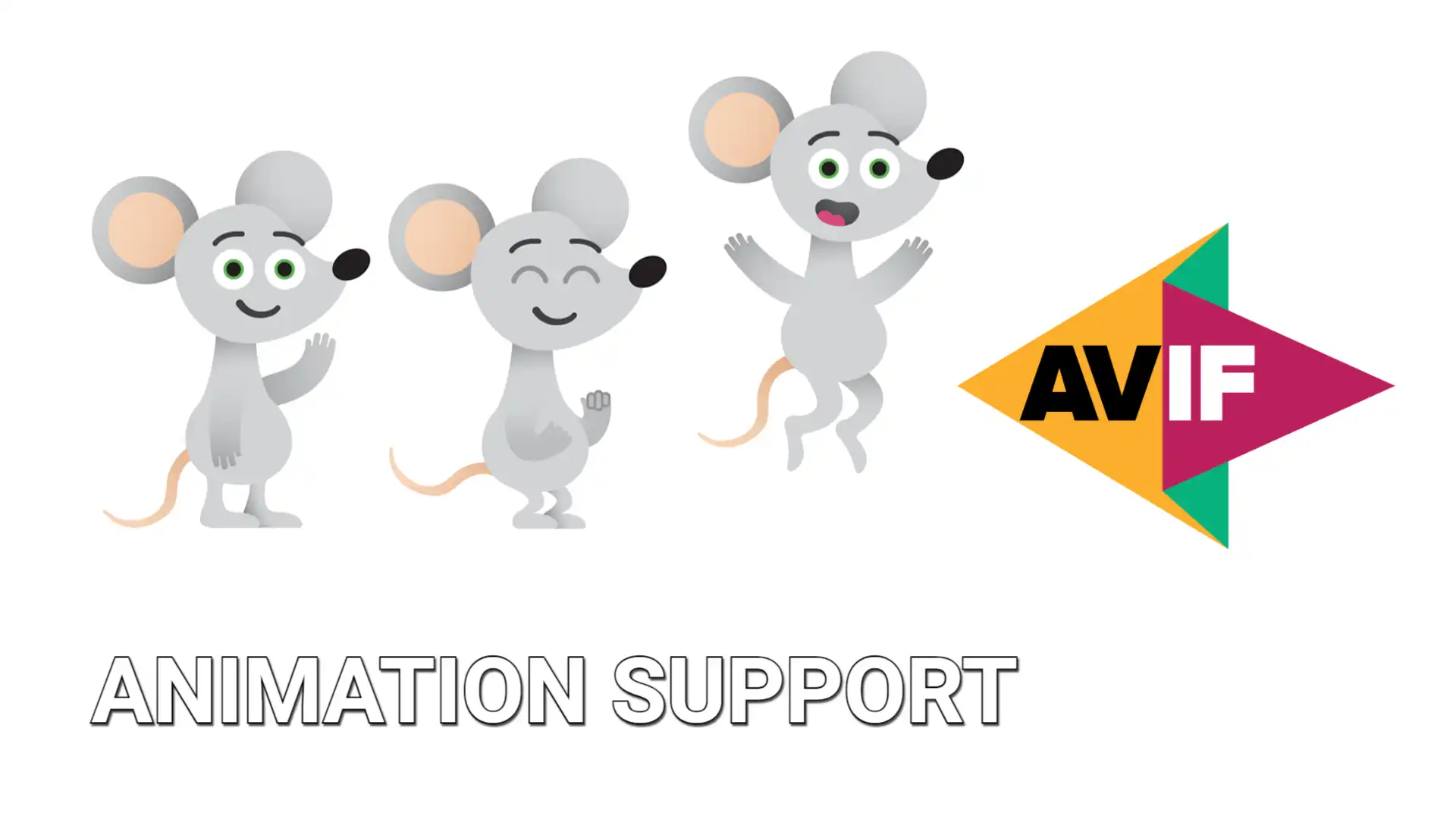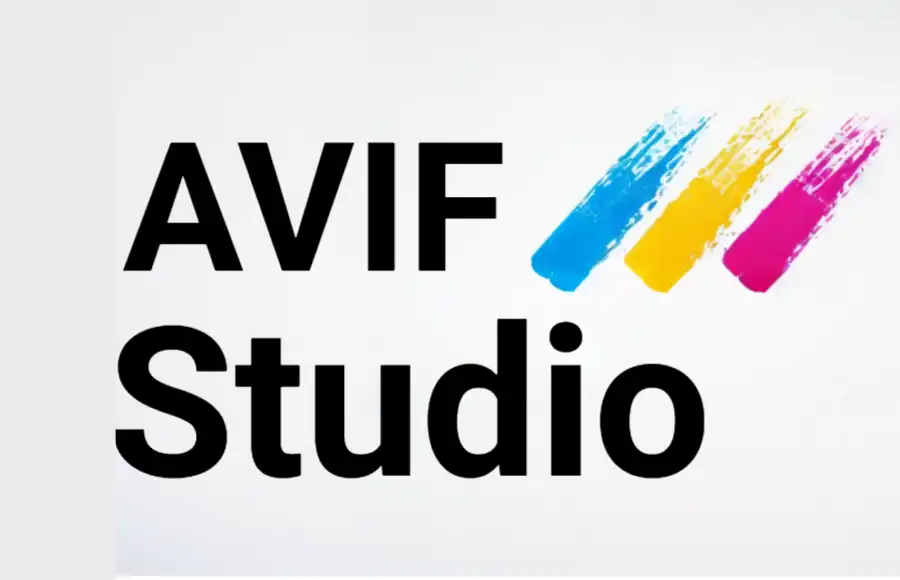Does AVIF Support Animation?

AVIF, standing for AV1 Image File Format, is an emerging image format developed by the Alliance for Open Media (AOM). Initially introduced as a still image format, AVIF has gained attention for its potential to revolutionize the way we handle image compression on the web. However, one of the most intriguing aspects of AVIF is its support for animation.
Traditionally, animated images on the web have been primarily handled by formats like GIF and, to a lesser extent, WebP. GIF, while widely supported, suffers from limitations such as large file sizes and poor compression efficiency, leading to longer load times and lower-quality animations. WebP, on the other hand, offers better compression than GIF but still falls short in certain aspects, particularly in terms of compression efficiency and support across different platforms.
AVIF brings a fresh perspective to animated content. Leveraging the advanced compression capabilities of the AV1 codec, AVIF can encode animated images with higher fidelity and smaller file sizes compared to traditional formats. This means that AVIF animations offer improved visual quality and faster load times, making them an attractive option for web developers and content creators.
One of the key advantages of AVIF animation is its superior compression efficiency. By employing state-of-the-art compression techniques such as intra-frame and inter-frame prediction, AVIF can significantly reduce redundancy in animated images, resulting in smaller file sizes without compromising visual quality. This not only improves the user experience by reducing bandwidth usage and load times but also allows for smoother playback on devices with limited resources.
Another noteworthy feature of AVIF animation is its support for a wide range of color spaces, bit depths, and alpha channels. This enables more accurate representation of colors and smoother gradients in animated images, as well as seamless blending of animated layers with the background. Additionally, AVIF supports advanced features like HDR (High Dynamic Range) imaging, providing more vibrant and lifelike visuals in animated content.
In terms of browser and platform support, AVIF animation is gradually gaining traction. Major web browsers such as Google Chrome, Mozilla Firefox, and Microsoft Edge have started adding support for AVIF in recent releases, allowing users to view AVIF animations directly within the browser without the need for plugins or extensions. Furthermore, platforms and services like Android, iOS, and macOS are also embracing AVIF, enabling users to view AVIF animations in their native apps and environments.
In conclusion, AVIF represents a significant advancement in the realm of animated image formats. With its superior compression efficiency, support for advanced features, and growing adoption across browsers and platforms, AVIF animation has the potential to redefine the way we experience animated content on the web. As support for AVIF continues to expand and developers explore its capabilities, we can expect to see more engaging and immersive animations powered by this innovative image format.
Frequently Asked Questions
- What is AVIF and how does it differ from other image formats in terms of animation support?
- What are some of the key advantages of using AVIF for animated content compared to traditional formats like GIF or WebP?
- How does AVIF handle compression for animated images, and what impact does this have on file size and quality?
- Can AVIF support transparency in animated images, and if so, how is this achieved?
- What browsers and platforms currently support the playback of AVIF animations?
- Are there any notable limitations or drawbacks to using AVIF for animated content compared to other formats?
- How does the performance of AVIF animations compare to other formats, particularly in terms of rendering speed and efficiency?
- Are there any specific tools or software packages that have built-in support for creating AVIF animations?
- What are some best practices for optimizing AVIF animations for web delivery and ensuring cross-browser compatibility?
What is AVIF and how does it differ from other image formats in terms of animation support?
AVIF, or AV1 Image File Format, is an advanced image format developed by the Alliance for Open Media (AOM) that utilizes the AV1 video codec for image compression. It differs from other image formats, such as GIF or WebP, in terms of animation support primarily due to its underlying compression technology. AVIF leverages the AV1 codec's sophisticated compression algorithms, which are specifically designed to handle both still images and video content efficiently.
Unlike GIF, which relies on outdated LZW compression and supports only basic animation features, AVIF can encode animated images with higher fidelity and smaller file sizes. Similarly, while WebP offers better compression than GIF and supports animation, AVIF surpasses it in terms of compression efficiency, especially for high-quality animations. AVIF's ability to compress animated images effectively while maintaining high visual fidelity makes it an attractive choice for modern multimedia applications.
What are some of the key advantages of using AVIF for animated content compared to traditional formats like GIF or WebP?
Using AVIF for animated content offers several key advantages over traditional formats like GIF or WebP. Firstly, AVIF provides superior compression efficiency, resulting in smaller file sizes without compromising image quality. This means that animated images encoded in AVIF consume less bandwidth and storage space compared to GIF or WebP, making them more suitable for delivery over the internet.
Secondly, AVIF supports a wider range of color spaces and bit depths, allowing for more accurate representation of colors and smoother gradients in animated images. Additionally, AVIF can leverage advanced features like HDR (High Dynamic Range) imaging, providing more vibrant and lifelike visuals. Moreover, AVIF's support for both lossy and lossless compression modes gives users flexibility in choosing the trade-off between file size and image quality, which is particularly beneficial for animated content.
How does AVIF handle compression for animated images, and what impact does this have on file size and quality?
AVIF utilizes the AV1 video codec's advanced compression techniques to handle animated images efficiently. It employs intra-frame and inter-frame prediction, as well as various spatial and temporal compression algorithms, to reduce redundancy and optimize compression. This approach allows AVIF to achieve significant compression gains compared to traditional image formats like GIF or WebP, especially for high-resolution or complex animations.
The impact of AVIF's compression on file size and quality varies depending on factors such as the complexity of the animation, the chosen compression settings, and the desired level of visual fidelity. In general, AVIF can produce animated images with smaller file sizes compared to other formats while maintaining comparable or even superior quality. However, achieving optimal compression often requires careful tuning of encoding parameters and balancing between compression efficiency and visual fidelity.
Can AVIF support transparency in animated images, and if so, how is this achieved?
Yes, AVIF can support transparency in animated images through the use of alpha channels. Similar to other image formats like PNG and WebP, AVIF allows users to specify alpha transparency information for each pixel in the image, enabling smooth blending of animated layers with the background. This transparency support is achieved by encoding alpha channel data alongside the color information using the AV1 codec's compression algorithms.
The inclusion of transparency in AVIF animations adds to their versatility and enables a wide range of creative possibilities, such as overlaying animated elements onto different backgrounds or integrating animations seamlessly into web designs. However, it's important to note that alpha channel information can increase the file size of AVIF animations, particularly for complex or high-resolution content, so careful consideration should be given to balancing transparency with compression efficiency.
What browsers and platforms currently support the playback of AVIF animations?
As of the time of writing, support for AVIF animations is gradually expanding across various browsers and platforms, albeit at different rates. Major web browsers such as Google Chrome, Mozilla Firefox, and Microsoft Edge have been adding support for AVIF in recent releases, allowing users to view AVIF animations directly within the browser without the need for plugins or extensions.
Additionally, platforms and services like Android, iOS, and macOS are also embracing AVIF, enabling users to view AVIF animations in their native apps and environments. While the level of support may vary depending on the specific version of the browser or operating system, the overall trend indicates a growing adoption of AVIF as a standard image format for both still and animated content.
Are there any notable limitations or drawbacks to using AVIF for animated content compared to other formats?
While AVIF offers numerous advantages for animated content, it also has some limitations and drawbacks to consider. One potential limitation is the relatively limited support for AVIF in older or less commonly used web browsers and software applications. Although support for AVIF is expanding rapidly, there may still be instances where users encounter compatibility issues or degraded performance when viewing AVIF animations.
Additionally, the encoding and decoding processes for AVIF animations can be computationally intensive, especially for complex or high-resolution content. This could result in longer processing times and increased resource utilization compared to simpler formats like GIF. Furthermore, the adoption of AVIF may require updates to existing infrastructure and workflows, which could involve additional time and effort for migration.
How does the performance of AVIF animations compare to other formats, particularly in terms of rendering speed and efficiency?
In terms of rendering speed and efficiency, AVIF animations generally perform well compared to other formats, especially for high-quality or complex content. The advanced compression techniques used in AVIF allow for smaller file sizes without compromising image quality, which can lead to faster loading times and smoother playback on compatible devices and platforms.
However, the performance of AVIF animations may vary depending on factors such as the complexity of the animation, the capabilities of the hardware and software used for encoding and decoding, and the level of support for AVIF in the playback environment. In some cases, users may experience slower rendering speeds or higher resource utilization when viewing AVIF animations, particularly on devices with limited processing power or outdated software.
Are there any specific tools or software packages that have built-in support for creating AVIF animations?
Yes, there are several tools and software packages that support the creation and editing of AVIF animations. Some popular options include Adobe Photoshop, GIMP (GNU Image Manipulation Program), and ImageMagick. These tools typically provide features for importing, editing, and exporting images in various formats, including AVIF.
Additionally, there are specialized encoding and transcoding tools specifically designed for working with AVIF, such as libavif and avifenc. These tools offer advanced options for optimizing compression settings, adjusting image quality, and converting between different image formats. As support for AVIF continues to grow, it's likely that more software developers will integrate AVIF support into their applications, further expanding the range of tools available to creators and developers.
What are some best practices for optimizing AVIF animations for web delivery and ensuring cross-browser compatibility?
Optimizing AVIF animations for web delivery and ensuring cross-browser compatibility involves several best practices. Firstly, it's essential to choose the appropriate compression settings based on the specific requirements of the animation, balancing between file size and image quality. Experimenting with different encoding parameters and compression modes can help achieve the desired balance.
Secondly, it's recommended to provide fallback options for browsers that do not yet support AVIF or have limited support. This could involve serving alternative image formats, such as WebP or GIF, to users accessing the website from unsupported browsers. Additionally, using feature detection techniques in JavaScript or server-side logic can help identify the capabilities of the user's browser and deliver the most appropriate image format accordingly.
